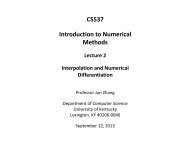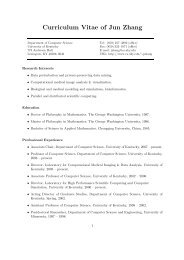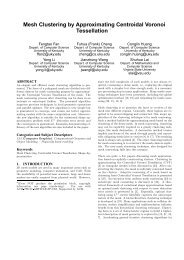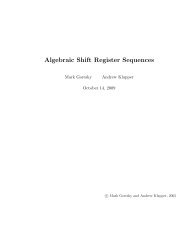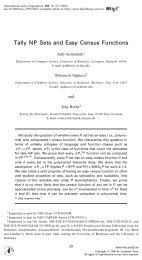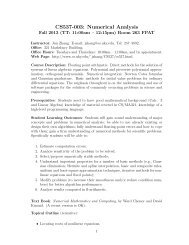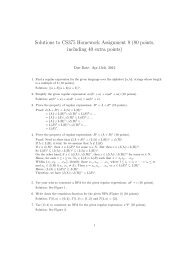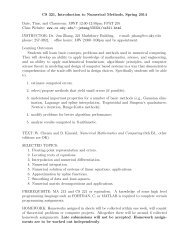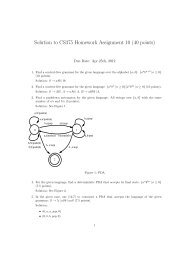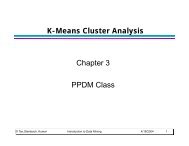Lecture 4 - Computer Science Department - University of Kentucky
Lecture 4 - Computer Science Department - University of Kentucky
Lecture 4 - Computer Science Department - University of Kentucky
You also want an ePaper? Increase the reach of your titles
YUMPU automatically turns print PDFs into web optimized ePapers that Google loves.
Lower and Upper Sums<br />
The lower sums and upper sums <strong>of</strong> f corresponding to the given partition<br />
P is<br />
n−11<br />
L(<br />
f ; P)<br />
= m x − x<br />
U<br />
(<br />
f<br />
;<br />
P<br />
) =<br />
∑<br />
i=<br />
0<br />
n−1<br />
∑<br />
=<br />
i=<br />
0<br />
i<br />
M<br />
( )<br />
i+<br />
1<br />
( x<br />
x<br />
)<br />
i+ 1 −<br />
If we consider the definite integral <strong>of</strong> a nonnegative f as the area under<br />
the curve, we have<br />
L ( f ; P)<br />
f ( x)<br />
dx ≤ U(<br />
f ; P)<br />
for all partitions P<br />
∫<br />
≤ b a<br />
i<br />
i<br />
i<br />
If f is continuous on [a,b], then the above inequality defines the definite<br />
integral. The integral also exists it if f is monotone (ith (either increasing i or<br />
decreasing) on [a,b]<br />
6



